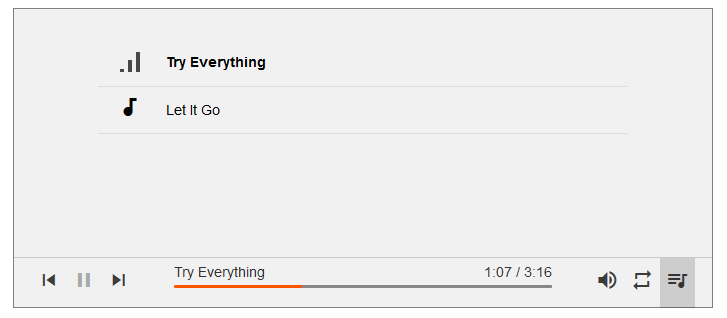

- #HTML5 AUDIO EXAMPLE HOW TO#
- #HTML5 AUDIO EXAMPLE FULL#
- #HTML5 AUDIO EXAMPLE CODE#
- #HTML5 AUDIO EXAMPLE FREE#
#HTML5 AUDIO EXAMPLE HOW TO#
Now we are going to see how to embed video and audio residing somewhere in your local computer. So far, we have learned how to embed video and audio from other web pages. Embedding video and audio from your computer
#HTML5 AUDIO EXAMPLE CODE#
Just copy the code and put it where you want your video to play. You will get a code very similar to the one used in the above example. You can simply copy the entire code and paste it into your HTML 5 editor.įor instance, open any YouTube video you want to embed, go to the Share tab below the title, and then click Embed. You do not need to write all the boring code in HTML 5 to get your video.
#HTML5 AUDIO EXAMPLE FULL#

HTML5 Audio and Video Tags – Embedding Media from another Web Page 1.1 Embedding video and audio from your computer.1 HTML5 Audio and Video Tags – Embedding Media from another Web Page.Of course, spammers are welcome only as readers. I will be happy to read every comment and, if necessary, I will do my best to respond as quickly as possible.
#HTML5 AUDIO EXAMPLE FREE#
If you have any questions, remarks, need help, or just like this page, please feel free to let me know by leaving a comment using the form bellow. Therefore, if you plan to use it, first of all, read about Base64 Data URI.

In addition, like almost any unconventional solutions, it has both advantages and disadvantages. Please note that Base64 Data URIs have some limitations. The difference is that in the first case the browser sends one HTTP request to fetch the MP3 file, when in the second case the sound file is already loaded in the browser’s memory and it does not need to send any HTTP requests. The same can be achieved by encoding MP3 to Base64 and embedding it using data URI: īoth behaviors are identical - when you open the page, the tag embeds and plays the same sound file. The “audio” tag is not supported by your browser. Both methods support data URIs.įor example, you can embed and autoplay a beep sound as follows: The path to the sound file can be specified via the src attribute or a nested tag. The tag is a HTML5 element which adds, plays, and manages sound files on a web page.

Guru A virtual teacher who reveals to you the great secrets of Base64


 0 kommentar(er)
0 kommentar(er)
